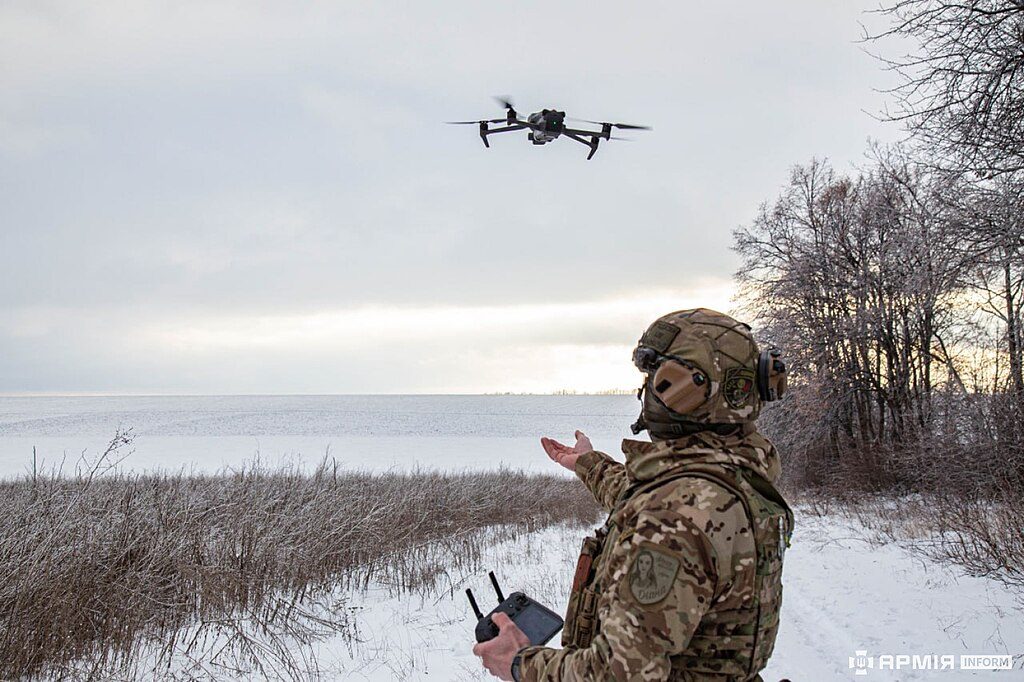As the U.S. pushes for domestic drone production, funding and execution lag behind policy goals
The Pentagon’s Department of Government Efficiency, known as DOGE, is taking a central role in reshaping how the U.S. military acquires drones. According to a recent Reuters report, DOGE has been tasked with streamlining procurement across the Department of War, consolidating drone orders from multiple branches, and accelerating the purchase of tens of thousands of low-cost uncrewed systems. The move signals an effort to close the growing gap between U.S. strategic ambitions and its actual drone production capacity.
The DOGE initiative builds upon the lessons of recent conflicts, where inexpensive and expendable drones proved decisive on the battlefield. U.S. defense officials have grown increasingly aware that the military cannot afford to rely on slow procurement cycles and small-scale orders if it hopes to match the rapid production and adaptability of competitors. By consolidating drone requirements across services and prioritizing efficiency, DOGE aims to deliver cost-effective systems in large quantities and at operational speed.
A Shift in Procurement Strategy
The decision to empower DOGE follows the limited progress of previous efforts, including the “Replicator” program, which sought to deploy thousands of attritable drones by 2025. While Replicator succeeded in identifying operational needs, it struggled to translate urgency into scaled production. DOGE is now expected to address those shortcomings by centralizing oversight and funding under a single coordinating body.
Under the plan described to Reuters, DOGE will review drone requirements across the Army, Navy, Air Force, and Marine Corps before presenting a comprehensive acquisition proposal to the Secretary of Defense. Early estimates suggest that the Pentagon could order at least 30,000 small, low-cost drones as part of the new framework. The goal is to reduce duplication, improve interoperability, and ensure that American-made drones are fielded faster.
The Domestic Manufacturing Challenge
Despite strong policy direction from the White House and Congress, the U.S. drone manufacturing sector continues to face what many describe as a “chicken and egg” dilemma. Over the past two years, the government has issued executive orders, memorandums, and policy statements calling for a robust domestic drone industry. Yet, actual procurement has been slow, leaving many U.S. manufacturers without the firm contracts or predictable demand needed to invest in production scale.
Foreign competition further complicates the equation. DJI, the world’s largest drone manufacturer, has effectively been excluded from U.S. government use due to security concerns. However, U.S. manufacturers have not yet reached comparable scale or cost efficiency. Without consistent orders from the DoD or other agencies, American companies struggle to lower production costs or build the supply chains necessary to compete globally.
This disconnect between policy and execution has left U.S. firms in a precarious position. They are expected to fill the vacuum created by restrictions on foreign platforms, but they are doing so without the funding and volume necessary to support sustained growth. As one industry executive told DRONELIFE earlier this year, “Signals are helpful, but factories run on purchase orders, not policy documents.”
Why DOGE Matters Now
DOGE’s involvement represents more than bureaucratic reorganization. It signals a shift toward operational pragmatism. By aligning procurement with industrial capability, the Pentagon may finally create a framework that allows U.S. companies to build drones at scale. Centralized management could help standardize requirements, pool resources, and ensure that funding flows to manufacturers ready to deliver.
If successful, DOGE’s approach could mark the beginning of a more agile, production-driven defense procurement model. However, its success will depend on sustained funding and clear timelines. Without rapid follow-through, the initiative risks becoming another well-intentioned plan that stalls before reaching the production floor.
Future Impact
The stakes are high. The U.S. military’s need for large numbers of affordable, interoperable drones is clear, and DOGE’s mandate could provide the structure needed to deliver them. Yet, for domestic manufacturers, the key challenge remains turning policy into purchase orders. Until that happens, the U.S. drone industry will continue to balance between ambition and execution, waiting for its own moment of scale.
The DOGE initiative suggests that the Department of War recognizes the urgency. Whether this new approach can overcome the inertia of traditional procurement and the funding delays that have frustrated manufacturers will determine whether the United States can truly build the drone industrial base it envisions.
Read more:


Miriam McNabb is the Editor-in-Chief of DRONELIFE and CEO of JobForDrones, a professional drone services marketplace, and a fascinated observer of the emerging drone industry and the regulatory environment for drones. Miriam has penned over 3,000 articles focused on the commercial drone space and is an international speaker and recognized figure in the industry. Miriam has a degree from the University of Chicago and over 20 years of experience in high tech sales and marketing for new technologies.
For drone industry consulting or writing, Email Miriam.
TWITTER:@spaldingbarker
Subscribe to DroneLife here.


